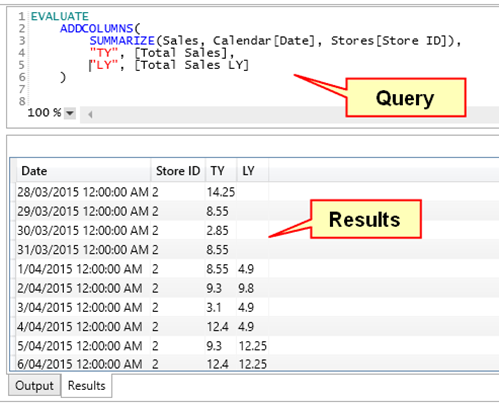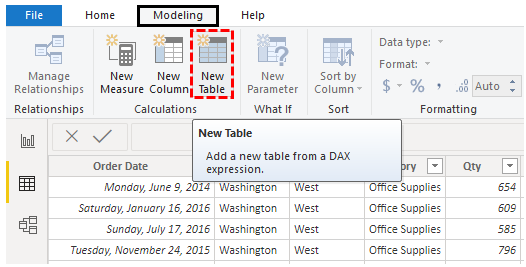

My sample dataset table is DimCustomer as below Creating aggregated tables using DAX functions is particularly very useful when creating virtual tables inside DAX measures.
#DAX SUMMARIZE HOW TO#
Summarize function gives you more control on how to create your aggregated table with some extra functions. In this article, I’ll explain how you can use Summarize function for the same purpose. Hello, Prashanth.In the previous article, I explained how you can use GROUPBY function in DAX to create an aggregated table.
#DAX SUMMARIZE CODE#
This works fine for date level of granularity, but when I want to aggregate on Year level, SUMMARIZE essentially does the calculation the same way as example 1 I showed and I am getting the following:Ĭan SUMMARIZE somehow be written in the same way I wrote Code #2?ītw, can you please share your email so that I can send you sample PowerBI report? But, if I use following syntax for Known: If I use the example you gave for Known table: Before I share the report (I am using SSAS cube behind the scenes so it will take me some time to prepare it), can you just help me understanding how this should work?įor example, let’s say we have 5 measures in 2 years: Then, I created only a measure to show Count_Items and I got following result:ĪND ( NOT ( ISBLANK ( Known ) ), NOT ( ISBLANK ( Known ) ) ) I tried the code above (on a Year granularity) using sequential Epoch values for years (2010 = 1262304000, 2011 = 1293840000, 2012 = 1325376000 and so on) and I modified the code as per your suggestion, but I am getting value for the trend to be equal to value of a measure (Y). By that I mean it is “year * 12 + month”, not “year * 100 + month”. You just need to make sure that the sorting column consists of sequential numbers. Hi, Rainar, thanks for your question! You can try the following formula (note the changes in the Known variable and the RETURN statement): Sample Power BI file: Simple linear regression.pbix Author Daniil Maslyuk Posted on 10 September 2017 2 December 2017 Categories DAX Tags regression If you think this pattern is useful, please give kudos to it in the Quick Measures Gallery. With simple linear regression, you can calculate them yourself, as long as you have sequential numeric values to use as known X values As soon as you use strings (month names, for instance), you lose the ability to add trend lines.


There are at least two reasons to consider calculated trend lines: The red line looks a lot like a trend line, doesn’t it? In fact, if you add a trend line to the graph, it will be exactly the same as red line: In case of sales, it is appropriate to use SUMX if you deal with temperatures, for example, you will probably use AVERAGEX. Note that to display the correct amount at the grand total level, you also need to modify the RETURN expression. For example, to estimate future sales, you can use dates in place of Measure X, like so: Simple linear regression = You are not limited to using measures for known X and Y values - you can also use columns, thanks to row context being present in SELECTCOLUMNS. Note how we show known weight values when weight is known, but we display estimated weight in case where weight is not known. We can now estimate Dumbledore’s weight and, with a little more DAX, build the following graph:
#DAX SUMMARIZE UPDATE#
Update 2 December 2017: the sales example was updated to display the correct Estimated Sales figure at the grand total level. But first, why would you want to do such analysis?

The two functions can be used for a simple linear regression analysis, and in this article I am sharing patterns to easily replicate them in DAX. As of 2017, some of the functions, such as SLOPE and INTERCEPT, exist in the latter but not in the former. DAX, originating in Power Pivot, shares many functions with Excel.


 0 kommentar(er)
0 kommentar(er)
